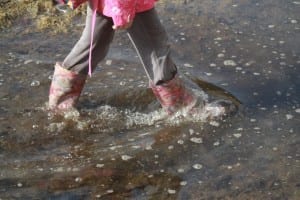
Dealing with the Aftermath of Flood Damage
Dealing with your home and belongings after a major flood can be overwhelming. If you follow some basic guidelines, the clean up process can be a little easier. Before you enter your home follow some safety tips, maintaining your health is the most important part of the recovery process.
Wait Until it is Safe
Before you enter a home that has been flooded, make sure that it is safe to do so. If there is standing muddy water, you need to make sure the flooring is safe. If your home was only exposed to water for a few hours, you should not experience major structural damages.
Make sure the electricity is off. Do not attempt to turn off the power if you have to be in a wet area to do so. If you smell gas, do not enter your home. Call your utility company or fire department. Gas lines do not normally break in floods, but you must be aware of the possibility.
Wear sturdy boots and gloves to protect yourself from debris. If you suspect mold has started to form, use a face mask. If sewage is present, you may need additional protective clothing.
Document the Damage
Take photos. Start on the outside of your home, and record the damages inside as well. Many of your belongings may have to be discarded. You will need documentation if you have flood insurance for reimbursement on your belongings that have been damaged.
Getting Your Home Dry
According to the Environmental Protection Agency (EPA), mold will begin to grow in as little as 48 hours. You need to remove standing water as quickly as possible and begin the drying process. Carpeting, floors and walls will still require cleaning, but the more quickly you can get areas dry, the better your overall results will be.
Open doors and windows and use fans to circulate the air. Do not turn on an HVAC system unless you are sure there is no hidden mold or bacteria inside the ducts. Circulating unhealthy air will only make things worse.
Cleaning Up
Get all clothing, bedding and other fabrics outside, if possible, to dry. If you can begin washing right away, go ahead and do so. If fabrics were contaminated with sewage, the items should be thrown out. Mattresses and fabric children’s toys, including stuffed animals, should not be salvaged.
Wood furniture should be cleaned and dried. A restoration company can let you know if upholstered furnishings can be cleaned. Books and artwork can sometimes be dried sufficiently. Kitchenware should be sanitized, use two tablespoons of bleach per gallon of warm water. Any exposed foods must be thrown out.
Shovel out any debris or remaining mud. Hard surfaces can be sanitized with a solution of ¼ cup of bleach per gallon of water. Bleach may damage some surfaces, test in a small area first. Portions of drywall, that came into contact with water, may have to be removed. Carpeting normally will have to be lifted to thoroughly clean and dry it. The padding underneath should be replaced.
The EPA recommends professional clean up and restoration in situations where there is heavy mold growth or any sewage damage. To ensure that your home is restored properly, and to a healthy condition, professional assistance is your best choice.
You can count on Professional Restoration to Respond, Recover and Restore your home and life back to order. If you’ve experienced flood, fire or smoke damage, call on our experienced team to schedule a free estimate: 303-992-4001.

